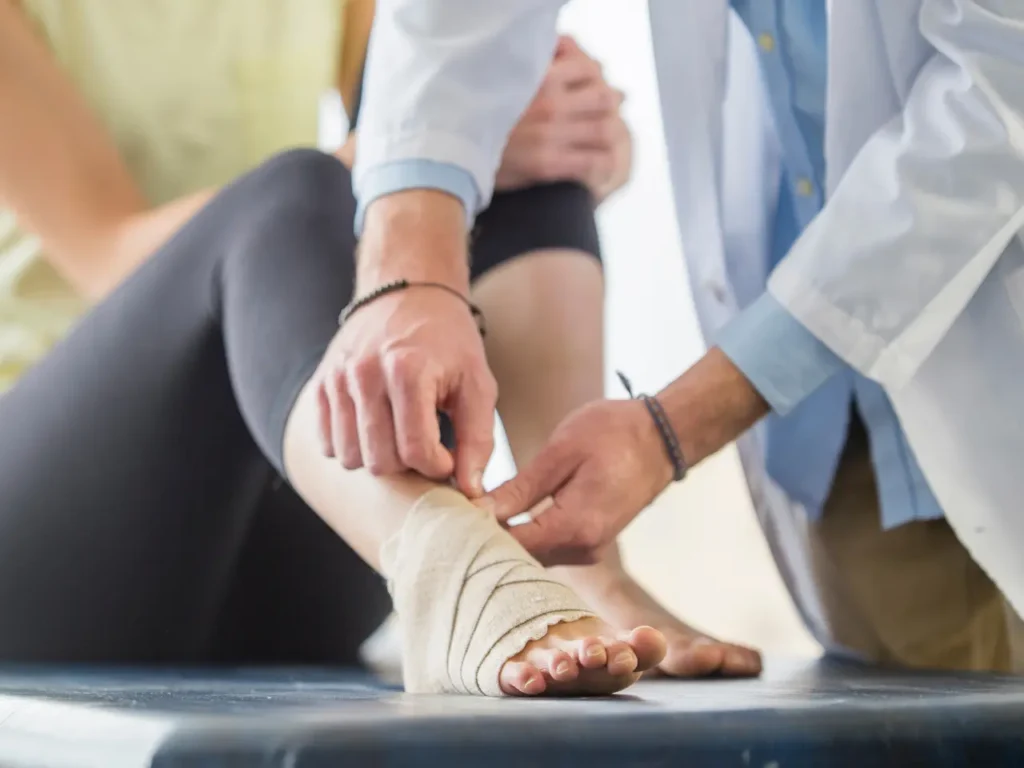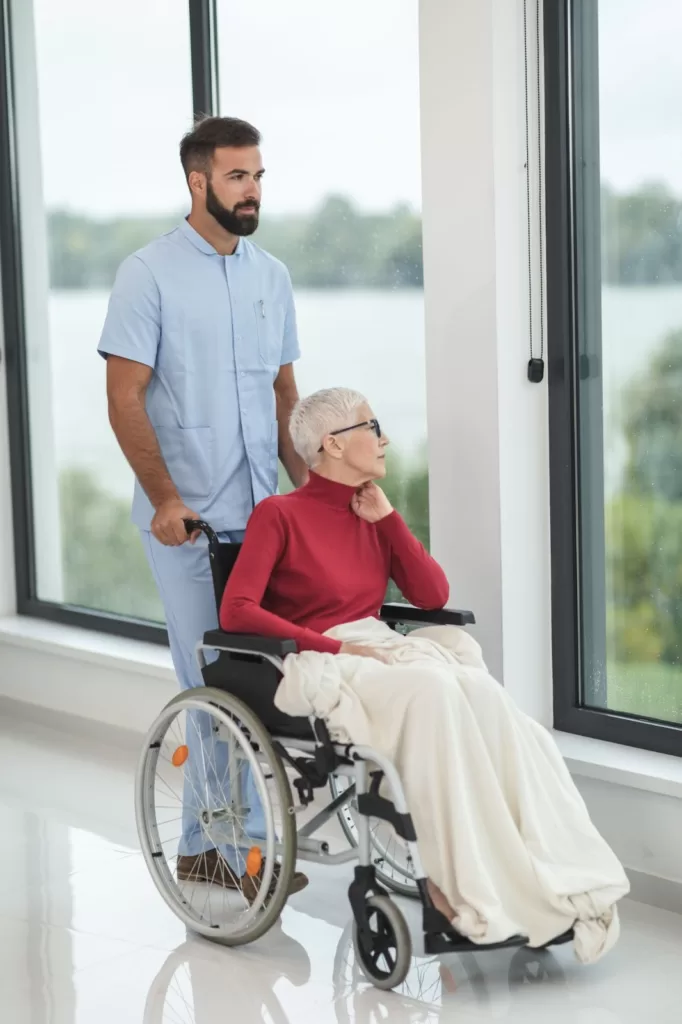Updated on August 20, 2024

Is CRPS A Disability In Australia?
Yes, CRPS is a disability in Australia. It is estimated to affect 1 in every 3,800 people, and many may be in severe pain for months to years before they get a diagnosis.
According to National Prescribing Service (NPS) Medicine Wise, in 2015, complex regional pain syndrome accounts for approximately 2-5% of adults and 20% of pediatric pain clinic patients.
CRPS is three to four times more common in women than in men, and it is at the peak age of onset, between 50 to 70 years.
It is said to affect women in a 3:5:1 ratio in adults. CRPS also affects around 5,000 Australians every year.
What is CRPS?
CRPS known as Complex Regional Pain Syndrome, CRPS is a scarce, intense pain disorder. It is a painful condition of a person’s arm, leg, or foot that occurs after an injury such as a fracture.
It is a multi-systemic disorder with severe pain that affects the central nervous system and musculoskeletal systems.
CRPS is challenging for patients and physicians because it leads to significant disease caused by chronic pain that may last for years.
It is an uncommon chronic pain condition, and rarely, it can affect other body parts such as the face.
Its features include:
- Limb pain.
- Allodynia
- Hypersensitivity.
- Hyperalgesia
- Abnormalities of the vasomotor (headaches, lightheadedness, chest pains, palpitations, etc.)
- Reduced use of the affected limb.
There are two sub-types of CRPS:
Type I:
This occurs without nerve damage. It most times happens after an illness or injury that did not directly damage a nerve. It used to be known as Reflex Sympathetic Dystrophy.
Type II:
This occurs after nerve damage. It used to be known as Causalgia.
Symptoms of Complex Regional Pain Syndrome
The symptoms of CRPS may include:
- Tremors.
- Burning pain in the arm, leg, or foot.
- The affected limb is drier or sweatier than the unaffected limb.
- Changes on the skin, hair, and nails on the affected limb.
- Joint stiffness, swelling, and damage to the affected area.
- Loss of fine motor control.
- Pain that changes its intensity, but often feels worse than, may have been expected.
- Swelling in the painful area.
- Sensitivity to touch or cold.
Injuries That May Lead To CRPS
Seldomly, people who have experienced a spinal cord injury, stroke, or even a heart attack develop CRPS.
However, most cases of CRPS occur after an injury, and a few include:
- Fracture – This happens as a result of a broken bone.
- Penetrating injury – a deep wound or laceration.
- Surgery – an operation to treat carpal tunnel syndrome.
Who is Likely To Get CRPS?
The US National Institute of Neurological Disorders and Stroke has recorded that most CRPS illnesses are a result of TYPE I, and they are caused by damage or improper function of the nerve fibers that transmit pain messages to the brain.
The most common activities that lead to CRPS are:
- Surgery – A surgical incision, sutures, or post-operative scarring can cause a nerve injury.
- Fractures – This is the most common cause of CRPS (mostly wrist fractures). Nerves can become injured from a displaced bone.
- Lesser injuries such as burns or cuts.
- Very rare penetrations such as a cut or a needle piercing can accidentally pierce a superficial sensory nerve.
- Sprain or Strains.
Proposed Treatment For CRPS
According to the Cleveland Clinic in the US, the goal of the treatment for CRPS is to decrease the individual’s pain, restore function to the affected limb, and maintain the quality of life.
The pain worsens with time and without treatment. While treatment requires a few managed approaches, here are a few medications an individual can try:
- Physical and Occupational Therapy
This can help blood flow to the affected limb, and increase your flexibility, strength, and muscle tone. It also allows you to function with certain exercises.
- Lifestyle Changes
Removing certain barriers that may hinder your quick recovery, can go a long way in helping you do better with your health e.g. quitting smoking, and managing existing health conditions.
- Medications
There are no medications properly assigned to the treatment of CRPS. However, there are certain medications one’s healthcare provider can recommend to help in the easing of the pain one may experience.
- Psychosocial and Behavioral Therapy
CRPS is associated with anxiety, depression, and stress which can increase pain. Psychosocial may help.
CRPS Financial Help In Australia
The Disability Support Pension helps Australians who cannot work due to disabilities or an injury.
However, about 70% of these claims get rejected, and it may be difficult to understand what your application is missing.
The government guidelines may be heavy on the legal jargon but constantly trying to speak to a specialist can help to make your application successful in the long run.
Conclusion
CRPS is a chronic primary pain problem, that requires early diagnosis and an early intense treatment. It is a health condition that is progressive and affects the physical and sociological well-being of a person. Diagnosing and treatment must be swift, adequate, and tailored to an individual’s symptoms.
Looking for reliable and trustworthy care services?
At Centre Disability Support, we offer tailored support services for individuals with disabilities throughout Australia. We offer housing options in Logan, Ipswich and Brisbane areas, where we provide independent supported living or assist individuals in finding suitable options for individualised living.
Additionally, we provide day-to-day support for individuals with mental health issues, complex behaviour and other types of disabilities. We also have support coordinators available to assist with planning and navigating NDIS plans and offer casework support.
Whether you’re seeking support for yourself, a loved one, or simply wish to learn more about our services, we’re here to help.
MORE FROM CENTRE DISABILITY SUPPORT
Is Endometriosis a Disability in Australia?
Is Bipolar Disorder a Disability?
IS FIBROMYALGIA A DISABILITY IN AUSTRALIA?
IS AUTISM A DISABILITY IN AUSTRALIA?



